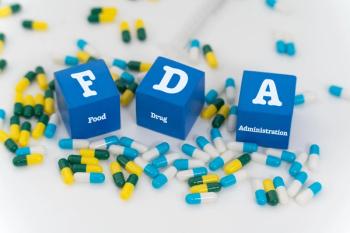
|Articles|April 13, 2018
10 Fast Facts About Shingles
Author(s)Beth Longware Duff
All the basics your patients need to know in one list.
Advertisement
More is known about shingles-and more can be done to prevent it-than ever before. Check out these important talking points about this potentially serious condition below so that you can discuss them with your patients.
Shingles is caused by varicella zoster, the same virus responsible for chickenpox. After a chickenpox infection, the virus goes dormant in the nerve cells of the spine. A person’s immune system works to keep the virus under control, but if immunity is compromised, the virus can erupt out of a nerve root and form the painful rash known as shingles (herpes zoster).
- About one million cases of shingles are diagnosed in the United States annually, with up to half of them in people over the age of 60. One in three people will develop shingles in their lifetime, and it may
reactivate multiple times in some individuals.
- Although shingles is associated with aging and is typically more severe in those over the age of age 50, anyone who has had chickenpox is at risk of developing shingles. Anything that weakens a person’s immune system can lead to shingles, including certain medications, cancers, infections, or stress.
- Shingles is a painful infection of the nerve supplying an area of skin. Nerves extend out of the spine in pairs, with one nerve going to each side of the body. That’s why a shingles rash presents on only one side and rarely crosses the midline of the body.
- Shingles shows up as fluid-filled blisters that form along the distinct bands of dermatomes, each of which corresponds to a single sensory nerve. The rash is often preceded by several days of acute pain, aches, skin sensitivity, and fever.
- Patients diagnosed within 72 hours of developing the rash generally have a better outcome. Antivirals-including acyclovir, famciclovir, and valacyclovir-are often prescribed to stop the spread of the virus. When started early, antivirals can shorten the pain and rash to a couple of weeks instead of a month.
- Steroids can help alleviate the pain associated with shingles, which is often described as tingling, burning, itching, and numbness. Anti-inflammatory pain medications such as ibuprofen and naproxen, topical Benadryl ointment, or cool compresses of baking soda and water can also provide relief.
- The most common complication associated with shingles is
postherpetic neuralgia (PHN), a form of chronic nerve pain. It occurs in about one-fifth of all cases and is the result of nerve damage during the shingles outbreak. In people with impaired immune systems, complications from shingles can include pneumonia, brain inflammation, or even death. Other long-last effects are peripheral motor neuropathy, skin infection or scarring, transverse myelitis, eye problems, and general weakness.
- Shingles is contagious in the sense that the virus can spread to and infect a person who has never had chickenpox. Until the blisters dry up and scab over, shingles patients are advised to avoid contact with children under the age of one, pregnant women, and immunocompromised individuals.
- Two shingles vaccines are now available. The newer one is
Shingrix , a non-live recombinant vaccine given in two doses that was approved by the FDA in 2017. It has been proven to be more then 90% effective against shingles and also reduces the overall incidence of PHN. Shingrix is recommended by the CDC for healthy adults aged 50 and older. The older vaccine isZostavax , which contains a weakened chickenpox virus and is recommended by the CDC for people 60 years old and older. Licensed by the FDA in 2006, it reduces the risk of developing shingles by 51% and PHN by 67%. Either vaccine can be given to people who have already had shingles to prevent another episode.
Newsletter
Pharmacy practice is always changing. Stay ahead of the curve with the Drug Topics newsletter and get the latest drug information, industry trends, and patient care tips.
Advertisement
Latest CME
Advertisement
Advertisement
Trending on Drug Topics
1
GoodRx Offers Wegovy Weight-Loss Pill at Under $150 a Month
2
COVID-19 Vaccination Reduces Mortality Related to COPD
3
FDA Approves Denosumab-Mobz as Biosimilar for Prolia, Xgeva
4
Zoliflodacin, Gepotidacin Receive FDA Approval for Gonorrhea
5











































































































































































































